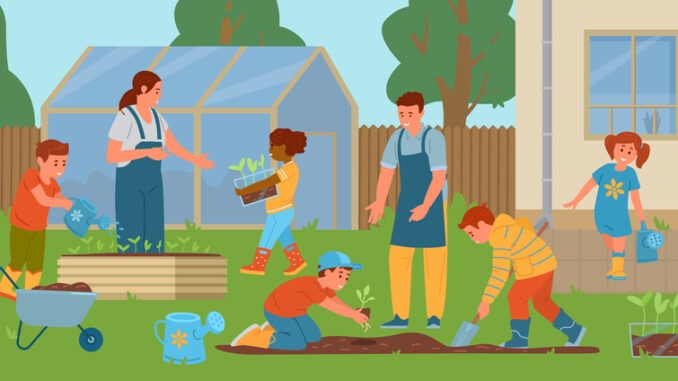
Helen Burge, deputy COO at The Priory Learning Trust, gives her advice on how can you can make your school more biodiverse
Sustainability is not just the SBM’s responsibility; as you read this, consider who you could delegate the actions to, or work with.
What does biodiversity in schools mean? It’s not what I’m sure we’ve all found at the bottom of the lost property pile – a long forgotten lunch box complete with its own fungi or micro-organisms – bad luck if you discovered one with its own insects in the form of maggots! It won’t surprise you, but this is the wrong type of biodiversity to be encouraged in your school and grounds.
It’s a tricky thing to develop a school’s biodiversity – there are so many demands on the outdoor learning environment for sports, science lessons, play areas, ponds, forest schools, quiet reflective areas, parking for cars, bikes and scooters, bin storage, hard standing play areas etc., – the list goes on. Plus, there are people’s opinions to consider – after all one person’s weed is another person’s wildflower – and we must ensure the grounds are always fit-for-purpose, looking fantastic and that they don’t become a burden on the budget, site team or volunteers.
You can see why biodiversity might not be high up the list of things to tackle within a school, and yet the threats to biodiversity in our world – and sometimes within our school grounds – are very real, whether caused by changes in habitat, pollution, climate change, species over-exploitation or invasive species and disease.
I’m not sure many schools have caused species over-exploitation within their school grounds, but you could purchase fish from sustainable sources to put on school lunch menus in a bid to prevent over-fishing. Invasive species and diseases sound grim but, hopefully, your expert grounds maintenance team are able to spot Japanese knotweed at 20 paces, and know how to successfully treat it so it doesn’t spread across the rest of the grounds, into neighbouring property – or destroy your building’s foundations or hardstanding areas.
Building projects
Term seven building projects can create changes in habitat either permanently with a new build or temporarily. Be careful where you create your building works storage compound, as items stored there, and heavy access, will cause damage to the grounds by restricting light and water. Such works could also be a source of pollution – chemicals used in the project could be spilt, or concrete mixers can spray across green areas. The next building project you have, however small, consider what extra measures you could ask the contractors to take to protect the ground and surrounding plants or help create new habitats.
Vehicle pollution
If you’re concerned with vehicle pollution take a look at Clearairforkids.org.uk for support and ideas – one of these to implement could be putting up a green screen of ivy to prevent pollution coming into the school grounds. You could also have a look at the Woodland Trust, which will soon be opening their next round for free trees for schools. Later in the year you could take part in The Queen’s Green Canopy to mark Her Majesty’s Platinum Jubilee, and also consider the Learning through Landscapes website which often offers grants or free resources such as bug hotels.
Neglected green spaces
Do you know roughly how many m2 of green space is in your school grounds and how it is being used? Is there a neglected area which could be repurposed to help deliver an area of the curriculum, or could it be used to create a specific habitat to attract pollinators? We know 90% of flowering plants use a range of insect, bird or bat pollinators to achieve pollination; creating an area of plants which attract pollinators will help combat the decline in bees. For inspiration, you could take a look at the Wildlife Trust website for suggestions of plants.
You don’t have to install a whole new vegetable patch; just start with a pot of herbs. Take incremental steps in increasing the biodiversity of your school grounds – like a potted lavender plant by the front door (quick win) or allowing some grass areas to grow longer or seed to become a meadow (long term project).
Install some bird boxes, bird baths or feeders, bat boxes and bug hotels and plant trees or hedges and, hopefully, you’ll get to sit outside one lunchtime and spot a bird or insect which you’ve helped attract into your school’s habitat.

Be the first to comment